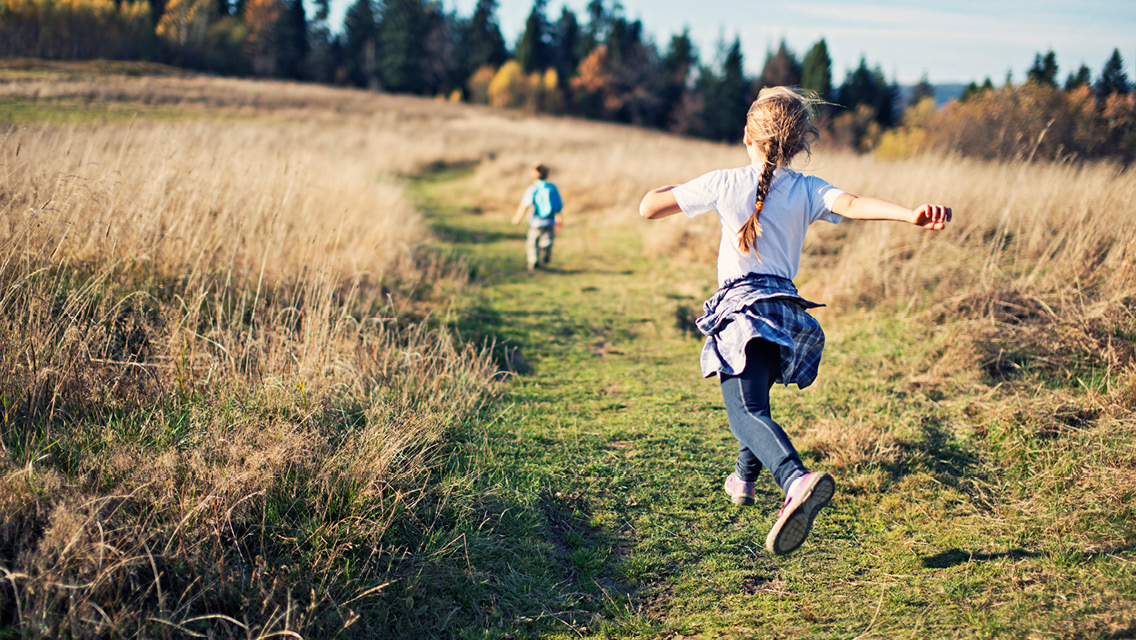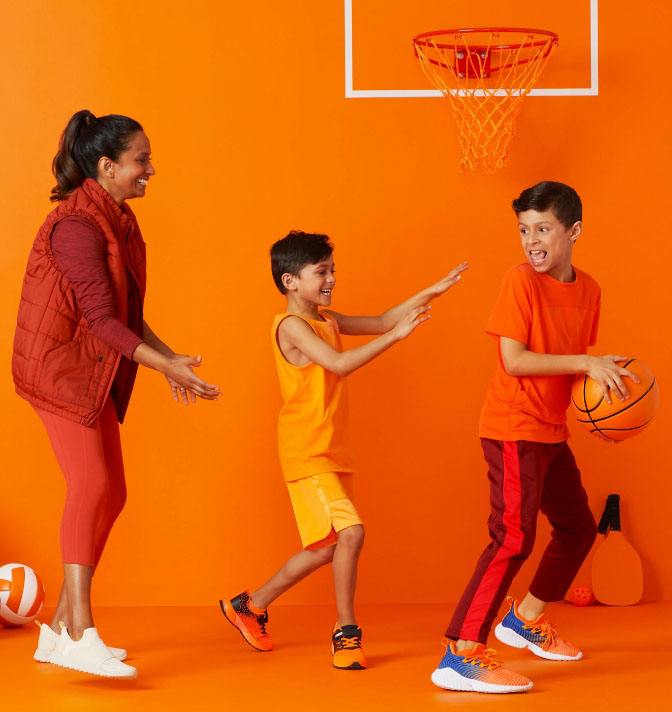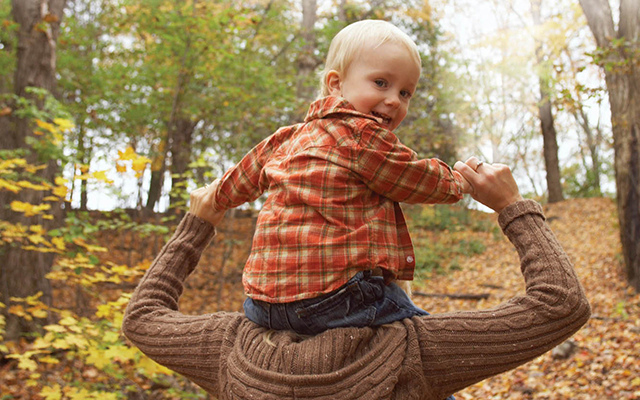You know the statistics about the surge in childhood obesity and diabetes. You also know that today’s kids are less active than any previous generation. You’re determined that your family will buck this unsettling trend, so you encourage your children to choose a sport or two each season and try to keep them off the couch. You figure you have your bases covered.
But do you? How can we know how much exercise our kids are really getting? What should we consider when we’re registering our kids for various teams and lessons?
The President’s Council on Physical Fitness and Sports recommends that children up to age 17 spend 60 minutes at least five days a week participating in some form of physical activity. Unfortunately, shuttling your kid to an hourlong soccer practice, where coaching demonstrations and other downtime carve away at the time any given child is in motion, won’t necessarily do the trick.
“When you look at a group of children on a playground, it appears they’re active,” explains Thom McKenzie, PhD, a San Diego State professor of exercise and nutritional sciences. “But that’s because activity catches the eye.” In reality, though, a lot of kids in a given “active group” actually spend much of their time just idling, observing or waiting their turn.
For example, McKenzie’s research shows that kids are active for just 40 percent of recess and 37 percent of a physical education class.
Now, before you start obsessing about the active-to-sedentary ratios of your children’s pastimes, consider this: Most experts agree that the real goal is not to micromanage your child into achieving an arbitrary number of active minutes. Rather, your parental objective should be to give your kids a variety of appealing opportunities to move their bodies every day — from recess frolicking or freeze tag with the neighborhood kids to organized sports. Get ’em moving on a regular basis, supporting those active pursuits with good, balanced nutrition, and then you can quit your worrying.
One urge we must resist, experts say, is the temptation to start aggressively training our kids for future sports glory. Both the National Association for Sports and Physical Education (NASPE) and The President’s Council on Physical Fitness and Sports strongly caution against year-round practices or games — in any sport — until a child has gone through puberty.
Playing one sport the entire year puts developing bodies at an increased risk of overuse injuries, they say, and it also leads to higher levels of burnout later.
“As a society, we encourage specialization,” says Frances Cleland, PED, professor of kinesiology at West Chester University in Pennsylvania and president of NASPE. “But children are better served by being exposed to a wide range of physical activities.”
Start by evaluating your kids’ fitness mix as it stands today, then consider some ideas for improving it over time.
Walking or Biking to School
Parents say: I like the idea of my kids getting built-in activity before and after school, but I don’t have the time to go with them and make sure they’re OK.
Experts weigh in: From a fitness perspective, this activity is a winner. Walking increases bone strength and density; biking builds cardio health and develops balance; and any activity done daily builds both endurance and good fitness habits. Plus, walking or biking to school increases the likelihood that your child will choose to walk or bike for other short-distance trips, according to the Centers for Disease Control and Prevention (CDC).
There are limitations, of course: Most children today have to travel farther to school than their parents did, and it’s hard to argue that a child should walk more than a mile each way. Bad weather can put the kibosh on walking and biking plans, too, and younger kids might not be ready to go solo.
The bigger issue for many families, though, even those who live close to school, is fear of crime: They prefer to keep their kids in the car or on a bus because they’re concerned about their kids’ safety. Most experts agree that fears of attack and abduction are vastly out of proportion to the real risks, but that’s small comfort to concerned parents. In some cities, families are partnering with schools and community organizations to plot safe routes and teach pedestrian safety.
For tips on how to start a community Walk-to-School program, check out the CDC’s KidsWalk-to-School program.
Karate/Martial Arts
Parents say: My child is introverted and doesn’t always like boisterous team sports. Karate is a great way for her to exercise and practice self-discipline.
Experts weigh in: Karate and other martial arts develop flexibility, balance, coordination, and self-discipline. It’s a practical self-defense skill that also can lead to greater self-confidence. But how does a one-hour karate class shape up in terms of daily fitness recommendations?
That depends on how the class is taught, says Jacalyn Lund, PhD, associate professor of kinesiology and health at Georgia State University in Atlanta. Classes vary, so ask the instructor to explain how much drilling, calisthenics and sparring your child can expect. Better yet, stay and watch: If you don’t see a lot of sustained action and pink faces, the class may not provide a great deal of cardio intensity.
Perhaps just as important as class time is the number of hours a week your kids spend practicing on their own and the amount of body confidence they get as a result of their involvement in the sport. Most experts agree, though, that unless your kid’s martial art is an all-consuming passion involving daily drills, she probably would benefit from some supplemental activities.
(Explore all the various forms of martial arts to decide what may work best for your child’s personality.)
Soccer
Parents say: We’re happy our kids get a great cardio workout and learn how to be a good team player. And the sport is popular, so it’s easy to find a team or class.
Experts weigh in: Soccer offers a terrific aerobic workout that trains muscles for running, jumping, kicking and changing direction quickly, according to the American Academy of Pediatrics. McKenzie estimates that a 60-minute soccer practice satisfies 40 to 50 percent of the recommended daily activity levels, unless your child is playing goalie.
The sport also gets high marks for giving kids equal amounts of playing time and emphasizing the importance of fair play and teamwork — crucial life skills. If soccer becomes a favored sport and pastime for your child, it’s also an activity he or she may choose to pursue well into adulthood (without prodding from you).
As with any sport, though, it should not be your child’s only source of physical activity. You might encourage him or her to pursue some less structured, less competitive activities to balance out the structure of soccer practice.
Dance
Parents say: We love that dancing is something our kids seem to really enjoy. But is it really exercise?
Experts weigh in: From the swing to the hustle to the Soulja Boy routine, kids of every generation have enjoyed moving and grooving to popular dances. And thanks to the TV show Dancing with the Stars, even fuddy-duddy dances like the waltz have become hip.
Dancing can be a great workout, and unlike many sports, it allows you to express yourself creatively. One potential downside, particularly with modalities like ballet, is a pressure to conform to an ideal “dancer” bodytype.
To avert this, make sure to emphasize having fun, and talk to the instructor to make sure that you are aligned with the values and priorities the class espouses.
If your kid enjoys dancing enough to boogie anywhere and anytime he or she gets a chance, it could easily develop into a lifelong passion, and a fitness boon. More than any other activity, dance teaches rhythm — a key component of many other sports, from tennis to skiing to the backswing-pause-follow-through movement of a proper golf swing. And beyond its physical benefits, thanks to all the memory and spatial-intelligence demands, dancing can be as healthy for the brain as it is for
the body.
Lund says high-intensity dances such as folk dancing, jazz and hip-hop build cardiovascular fitness, while ballet focuses on strength, balance, flexibility and body control. How much a one-hour class in any of these dance modalities would count toward the recommended 60 minutes depends on the ratio of activity to instruction or demonstration. A high-intensity dance class can have an activity rate as high as 80 percent, she adds.
Gymnastics
Parents say: It’s great that my kids like a sport that is such a thorough all-around workout, but, as with dance, I worry a little about body-image issues.
Experts weigh in: Gymnastics combines the benefits of dance with the thrill of acrobatics. It develops strength, balance and mental focus. At the introductory level, kids think it’s a blast. And it’s an excellent competitive option for quiet kids who feel overwhelmed by more-chaotic team sports because it encourages teamwork in subtler ways.
But it’s vital that your child receive proper supervision from qualified coaches and spotters to prevent injuries, says Melissa Johnson, executive director of The President’s Council on Physical Fitness and Sports and a former competitive gymnast. And because you generally have to be physically small to excel in this sport, parents should be on the lookout for warning signs of body-image issues and eating disorders.
Playing Outside With Friends
Parents say: I want my kids to have fun outside with their friends like I did at their age, but I’m not comfortable letting them play without supervision. Plus, I’d rather they spend their time learning an actual skill.
Experts weigh in: Outside group play is important, both physically and socially, and it’s a great way for kids to incorporate activity without feeling they are “exercising.” Relying too exclusively on supervised and structured experiences — from soccer practice to piano lessons to play dates — can wind up limiting your kids’ exposure to diverse activities they might really enjoy.
“Parents want their children to maximize their potential,” says University of Minnesota social scientist William Doherty, PhD, author of Take Back Your Kids: Confident Parenting in Turbulent Times, and this can wind up backfiring on them. Doherty and other experts say there is nothing inherently wrong with structured sessions, but research shows that spontaneous play — preferably outside — not only encourages vigorous physical activity but also is a central part of healthy neurological growth. (For more of Doherty’s insights, see “Time for Health.” )
McKenzie says that children observed playing outdoors for 30 minutes got an estimated 12 minutes of the recommended President’s Council–activity level. Plus, it stimulates creativity and imagination, relieves stress, and provides kids with opportunities to collaborate and solve problems with their peers. School recess can provide these same benefits, but this childhood staple is in danger: Nearly one in three elementary schools in the United States provides no regularly scheduled recess.
Physical Education Class
Parents say: PE exposes kids to lots of different sports. But it cuts into time that could be spent on academics, and we’re not sure our kids really get that much out of it.
Experts weigh in: Your biggest concern should be that your kid is actually getting the PE time you assume he is and that it involves adequate activity.
In a quality PE class, elimination games (think dodgeball) have been nixed in favor of inclusive games that ensure everyone has fun and the less gifted athletes aren’t sitting on the sidelines. Even so, on average, children are active just 37 percent of PE-class time, according to McKenzie. Some schools have introduced small-sided games — such as three players versus three players instead of four versus four — to increase activity levels. And schools with the funds to do so have invested in more equipment, so there’s less time standing in line. Still, only 6 percent of U.S. schools offer PE classes five days a week.
Rather than harming academic performance, physical education classes might actually improve test scores, says Charles Hillman, PhD, associate professor of kinesiology and community health at the University of Illinois at Urbana-Champaign. Hillman surveyed 259 third and fifth graders in 2007 and found that children who received good marks on two measures of physical fitness — aerobic fitness and body mass index — tended to have higher scores on reading and math exams. And a CDC study found that girls who took the most PE (from 70 to 300 minutes a week) scored higher on standardized reading and math tests.
Active Video Games
Parents say: It’s great that my kids get some kind of workout in the middle of winter, but don’t they spend too much time in front of a screen as it is?
Experts weigh in: Research shows that active video games are reasonably good for kids, but that they don’t obviate the need for outdoor time and practical athletic skills. Some games — such as Dance Dance Revolution — burn more calories than walking on a treadmill, according to a study conducted at the Mayo Clinic in Rochester, Minn. And if your kid loves doing them, you avoid the nag factor. (The new Wii Fit targets core fitness, too, as well as body-awareness skills.)
While active video games may capitalize on kids’ passions for all-things-digital, cautions Richard Louv, author of Last Child in the Woods: Saving Our Children from Nature-Deficit Disorder they also contribute to children’s increasing alienation from the outdoors and from the many physical and emotional health benefits that natural environments provide. (For more on the great outdoors and healthy kids, see “Nature-Deficit Disorder”.)
Louv doesn’t oppose active video games — he praises them on many counts, including strengthening hand-eye coordination — but he worries that screen time doesn’t develop joyful curiosity. “It’s hard to get a sense of wonder playing video games,” he says.
Bottom line: There should be some limits on the amount of screen time your kids spend, even if it’s active. Encourage them to get outside every day and to pursue a variety of unplugged active interests.
Swimming
Parents say: Learning to swim is important for both safety and fitness. I just wish my kid got to swim more often.
Experts weigh in: Swimming is a fabulous way to build cardiovascular endurance, and it’s a necessary skill for boating and water sports. Plus, it’s a no-impact sport, which means fewer breaks, bonks, and bruises. Swimming also increases strength and range of motion.
Though frolicking and splashing around in the lake or pool doesn’t build as much cardio endurance as swimming laps, it still counts toward the activity guidelines. “Swimming also gives kids a sense of awareness of where they are in space,” says Johnson.
Perhaps the biggest challenge is the hassle factor: Most kids will beg to go to a pool or lake in the summer, but their excitement wanes as temperatures drop. And if you don’t have a good community pool or swimming hole in your neighborhood, even seasonal swimming can involve prohibitive amounts of drive time.
If your family belongs to a health club, look into whether it offers kid-friendly aquatics programs that can help keep things interesting even in the off-season. Alternatively, make sure your kids complement their summertime swimming with cool-weather sports or snow-based activities that deliver active-fun opportunities year-round.
If your assessment of your children’s athletic exposure suggests they’re a little less active than you’d like, look at it as an opportunity to make some healthy changes. The trick, says McKenzie, is to make fitness a family affair and to pick sports that your kids truly enjoy. “The best activities for general health,” he emphasizes, “are the activities that they will do.”
Hiking
Parents say: We love hiking, but our kids think it’s boring.
Experts weigh in: Hiking is a good physical workout, but the real benefits come from spending time in nature. Studies indicate that people who walk in nature have lower blood pressure levels than those who exercise on a treadmill. And 60 minutes of walking on flat ground is all your child needs to satisfy the daily recommendation, although there’s more benefit in varied terrain.
You don’t need to travel to Yellowstone to introduce your kids to the wonders of the great outdoors — any local park with trees will do. In the winter, try snowshoeing or cross-country skiing. If your kid balks at the idea of hitting the trail, try making your hike into a treasure hunt to find items on a list (an acorn, a bird feather and deer tracks, for example).
You can also expand your definition of exercise. Over the past decade, Great Britain has created a Green Gym movement, which encourages people to participate in activities such as stream reclamation and planting community gardens, all of which count as being active.
Making Fitness Fun
Is luring your kids away from the TV a challenge? Experts suggest that the following strategies will make it easier:
- Lead by example. Choose activities that are fun to do as a family. Pick something that everyone likes. An afternoon at a climbing wall or at the local pool can be a terrific way to spend active quality time together.
- Keep it brief. Especially for little kids, keep lessons and activities short. Increase time gradually based on their enthusiasm and maturity levels. Don’t get frustrated that your child can’t learn much in 30 minutes — these activities are really more about building enthusiasm for physical activity.
- Size up equipment. Use age-appropriate equipment, such as a kid-size basketball hoop. Starting little kids out on larger, more sophisticated equipment can be discouraging.
- Know when to back off. Some kids are slow to warm up to a new activity. If your child tries it a few times and still doesn’t like it, take that as a sign that it’s not the right sport for him or her — at least, not for now.





This Post Has 0 Comments